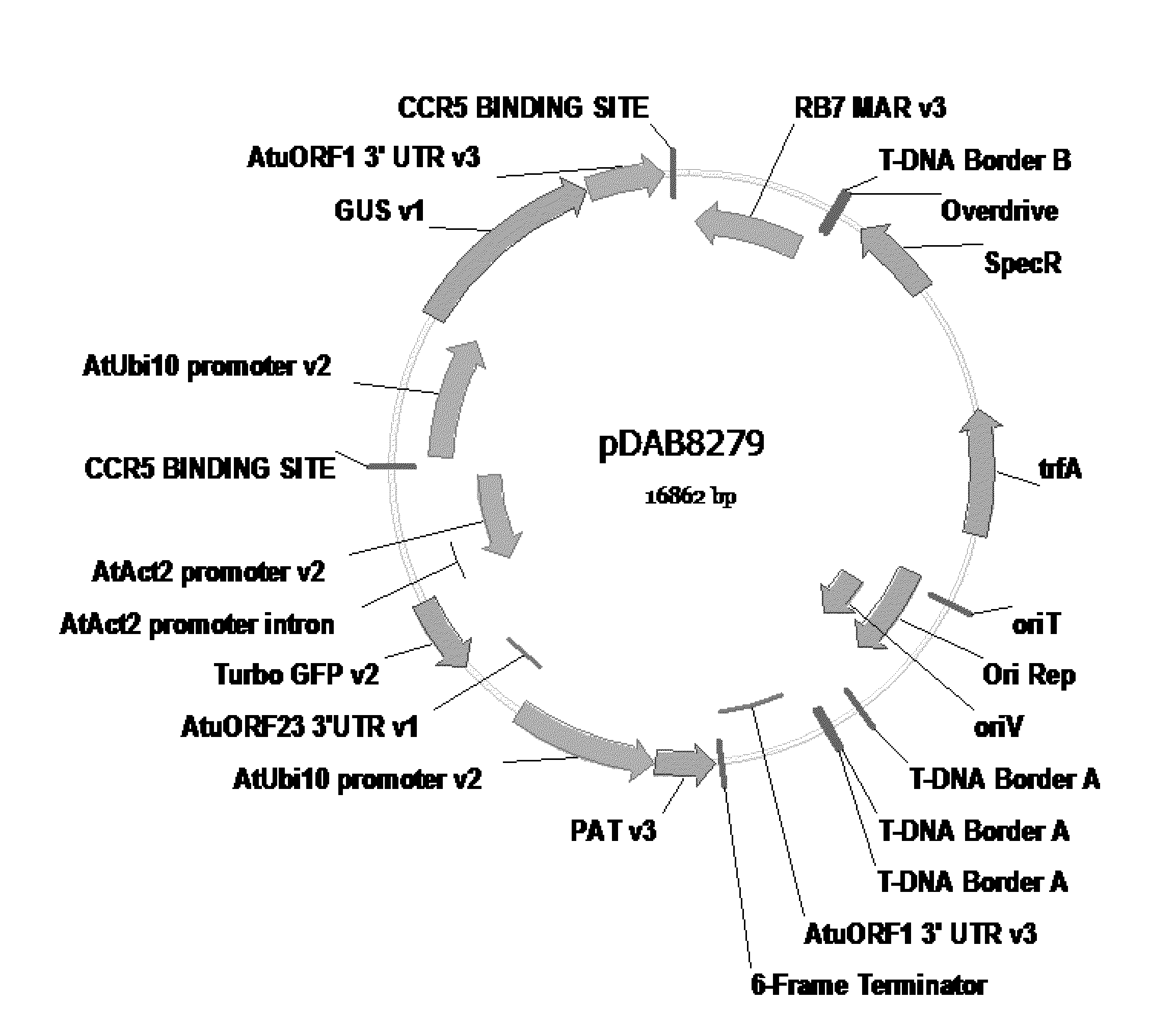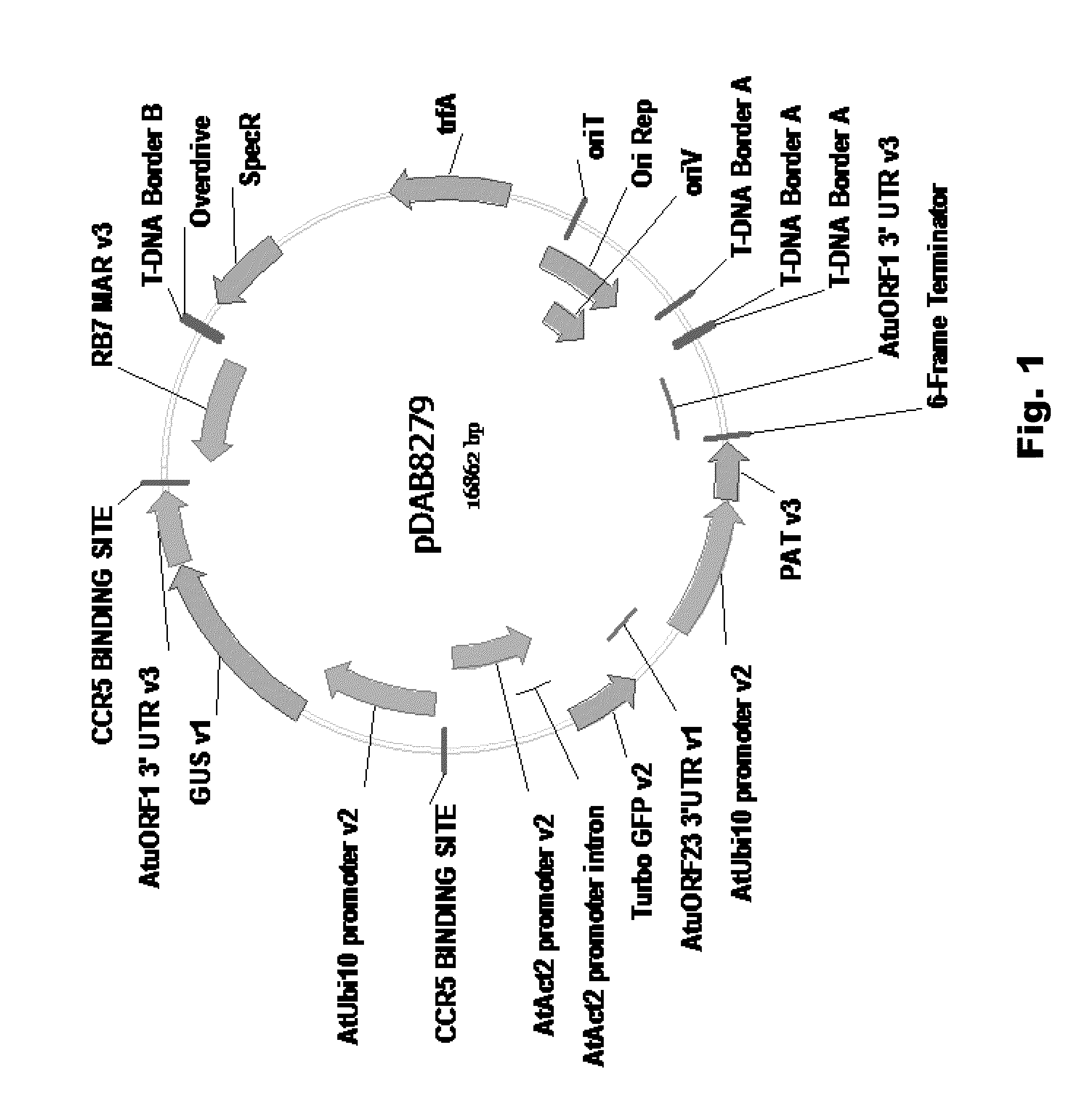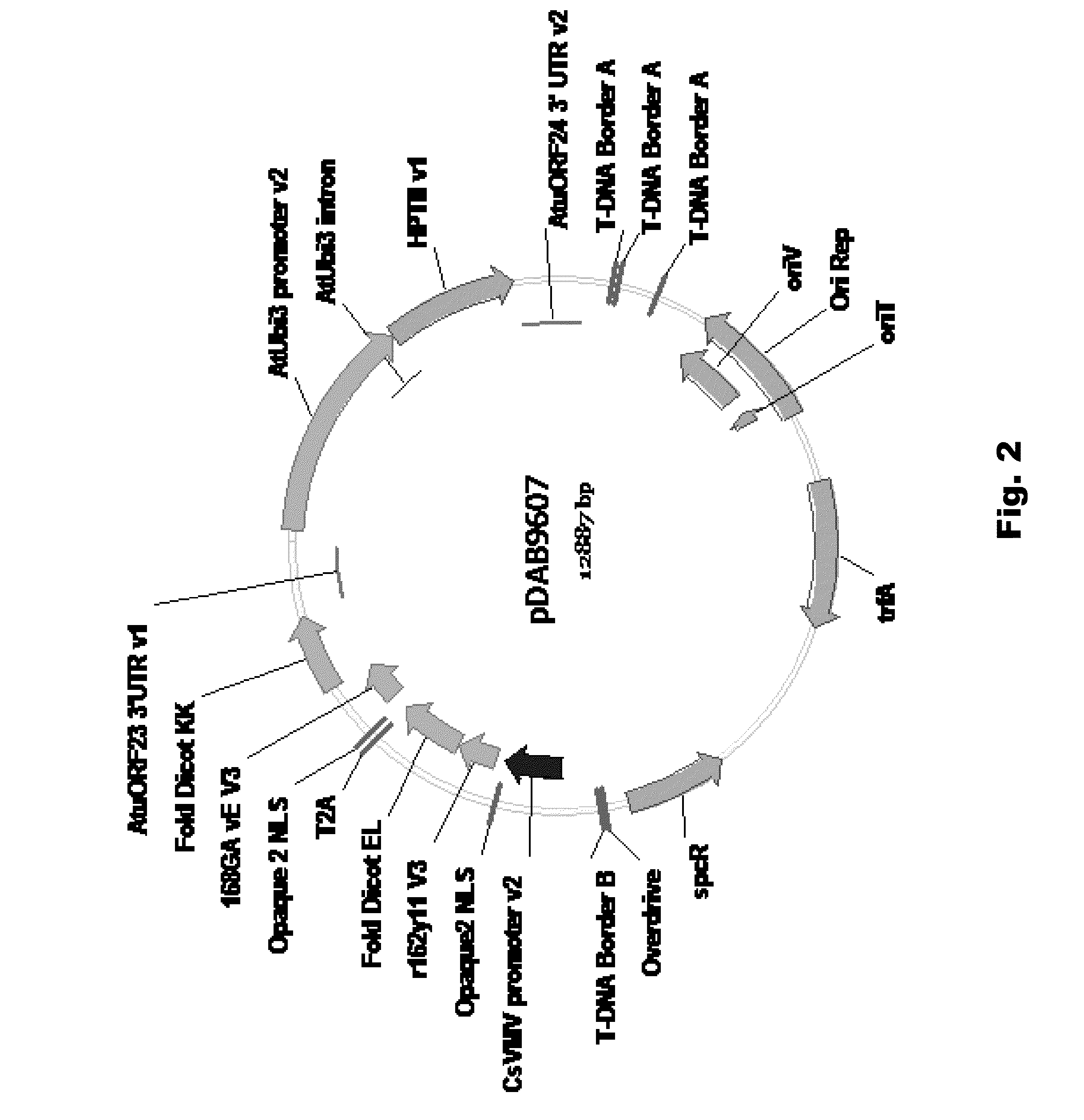Excision of transgenes in genetically modified organisms
a technology transgenes, applied in the field of genetically modified organisms excision, can solve the problems of increasing the risk of outcrossing, persistence, introgression of transgenes into adjacent populations, and significant contamination of non-gm crops with transgenic material, and posing difficulties in international trad
- Summary
- Abstract
- Description
- Claims
- Application Information
AI Technical Summary
Benefits of technology
Problems solved by technology
Method used
Image
Examples
examples
[0091]The following examples are included to illustrate embodiments of the invention. It will be appreciated by those of skill in the art that the techniques disclosed in the Examples represent techniques discovered by the inventors to function well in the practice of the invention. However, those of skill in the art will, in light of the present disclosure, can appreciate that many changes can be made in the specific embodiments which are disclosed and still obtain a like or similar result without departing from the scope of the invention. More specifically, it will be apparent that certain agents that are both chemically and physiologically related may be substituted for the agents described herein, while the same or similar results would be achieved. All such similar substitutes and modifications apparent to those skilled in the art are deemed to be within the scope of the invention as defined by the appended Claims.
example i
Plasmid Design and Construction
[0092]A target construct containing a target reporter gene expression cassette flanked by zinc finger binding sites (pDAS5380) and an excision construct containing a zinc finger nuclease gene expression cassette (pDAS5381) were designed and constructed. The constructs were designed to be transformed separately into tobacco. Target reporter gene excision was carried out by crossing the two tobacco lines, wherein a functional zinc finger nuclease recognized the zinc finger binding sites flanking the target reporter gene cassette and cleaved the genomic DNA. Crossing the plant lines containing the target reporter gene construct with the plant line containing the excision construct resulted in the removal / deletion of the reporter gene from the plant genome.
[0093]Construction and Design of Target Construct pDAS5380.
[0094]pDAS5380 (FIG. 1) was constructed as a binary plasmid vector. This construct contains the following plant transcription unit (PTU) express...
example ii
Agrobacterium-Mediated Plant Transformation
[0096]Transformation of Agrobacterium with pDAS5380 and pDAS5381.
[0097]Electrocompetent A. tumefaciens (strain LBA4404) cells were obtained from Invitrogen (Carlsbad, Calif.) and transformed using an electroporation method adapted from Weigel and Glazebrook (2002) “How to Transform Arabidopsis,” in Arabidopsis: A Laboratory Manual, Cold Spring Harbor Laboratory Press, Cold Spring Harbor, N.Y., U.S.A. Transformed colonies were obtained on yeast extract peptone media (YEP) containing spectinomycin (50 μg / mL) and streptomycin (125 μg / mL) and confirmed via restriction enzyme digestion. Clones which exhibited the correct restriction enzyme banding patterns were stored as glycerol stocks at −80° C.
[0098]Agrobacterium-Mediated Transformation of Nicotiana tabacum.
[0099]Tobacco (cv. Petit Havana) leaf discs were transformed using A. tumefaciens (strain LBA4404) containing pDAS5381 and pDAS5380. Single colonies of Agrobacterium containing these plas...
PUM
| Property | Measurement | Unit |
|---|---|---|
| Fraction | aaaaa | aaaaa |
| Fraction | aaaaa | aaaaa |
| Fraction | aaaaa | aaaaa |
Abstract
Description
Claims
Application Information
 Login to View More
Login to View More - R&D
- Intellectual Property
- Life Sciences
- Materials
- Tech Scout
- Unparalleled Data Quality
- Higher Quality Content
- 60% Fewer Hallucinations
Browse by: Latest US Patents, China's latest patents, Technical Efficacy Thesaurus, Application Domain, Technology Topic, Popular Technical Reports.
© 2025 PatSnap. All rights reserved.Legal|Privacy policy|Modern Slavery Act Transparency Statement|Sitemap|About US| Contact US: help@patsnap.com



